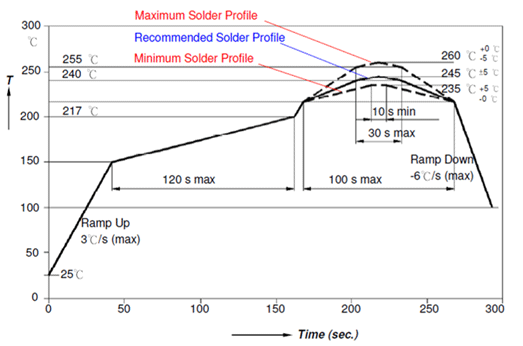

Soak- This is the part of the project in which it ensured that the components have reached the required temperature before entering the next reflow stage. Fast heating could cause component defects such as solder paste slattering or cracks. Proheat- During this phase of the process the printed circuit board, components and solder are heated to a specific dwell or soak temperature, with the main aspect, which is not to be heated too quickly (usually no more than +2 degrees a second). In order to create an appropriate reflow profile, thermocouples are connected to a simple assembly (often using high-temperature solder), in different locations to measure the range of temperatures across the printed circuit board. The process is focusing on creating acceptable solder joints by pre-heated components, which provides the opportunity to melt the solder without causing damage by overheating. Reflow soldering is the most popular and widely used method of connecting surface mount technology (SMT) components to a printed circuit board (PCB). What the considerations are of reflow PCB?

If you want to order PCB product, please check and custom your order online.
#Pcb reflow professional
In this passage, if you are looking for more information about reflow PCB, please check and read the content below for professional knowledge. Failure to create the right wave soldering environment is much more likely to lead to board defects.

Issues like board temperature and time the board spends in the solder wave need careful monitoring. In some ways, wave soldering is more complex. How do you know which type of soldering to use and when? It may depend on a variety of factors, such as pad shapes, the amount of time you have, component orientations, type of printed circuit board and more.


 0 kommentar(er)
0 kommentar(er)
